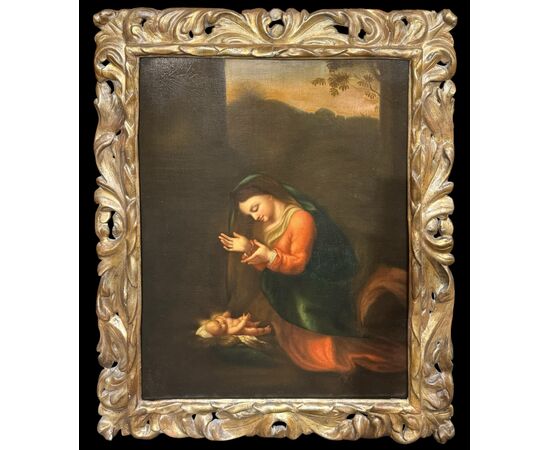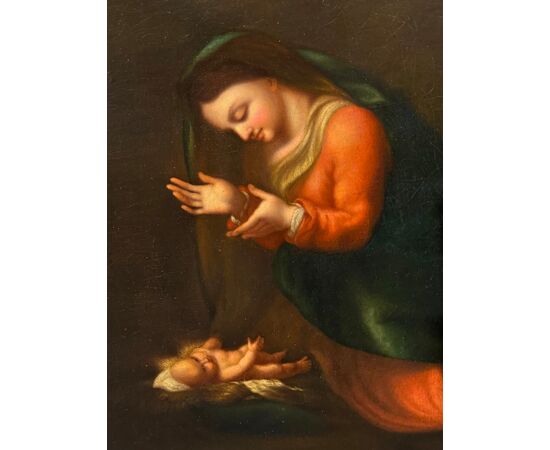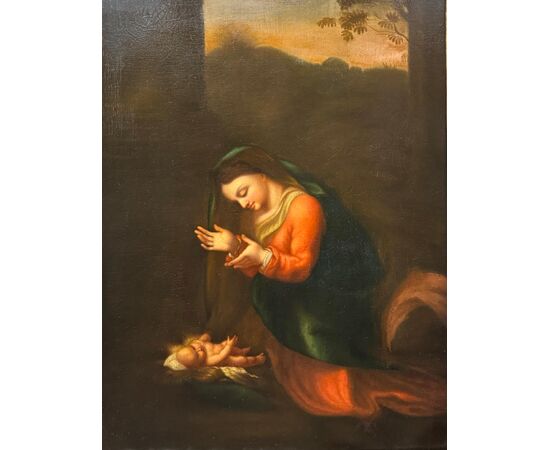Madonna in Adoration of the Child Jesus, by Correggio.
Madonna in Adoration of the Child Jesus, oil painting on canvas copy by Correggio.
The very natural gesture of the Virgin with her hands gently open and the rapt expression of contemplation of the little Child make this image fresh and delightful. The intimate relationship between mother and child is also enhanced by the idea of placing the newborn on the edge of her own blue cloak.
The scene is flooded with a golden light that in the background composes a bright sunset or, more likely, a dawn.
Some possible symbolic meanings have been identified relating to the fig tree visible on the right or to the white cloth on which the Child rests: a motif that could be interpreted in Eucharistic terms. More explicit, however, although still minimized, are the allusions to the flight into Egypt by means of the saddle visible in the foreground and the swaying palm in the background. The same goes for the fig tree that grows from the ruins, and which serves to remember how Christ's sacrifice redeemed Adam's first disobedience. The ancient ruins overgrown with grass allude to the end of paganism.
Antonio Allegri, known as Correggio, was one of the most important Renaissance painters of the Parma school. It is likely that he studied in Modena and Mantua, arriving before the death in 1506 of the famous painter Andrea Mantegna. Although his early works are infused with his knowledge of Mantegna's art, his artistic temperament was more similar to that of Leonardo da Vinci. While Mantegna uses a tightly controlled line to define form, Correggio, like Leonardo, prefers chiaroscuro or a subtle manipulation of light and shadow that creates softness of contour and a nuanced effect. It is also fairly certain that early in his career he visited Rome and was influenced by the Vatican frescoes of Michelangelo and Raphael.
Cm. 94x77 with frame
cm.74x59 without frame








